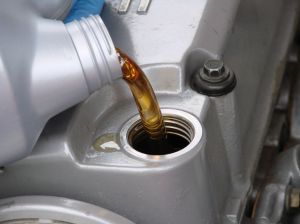We all know about these blinking lights on a dashboard, but they represent some very serious information
And at times, these signs can prove vital in safe driving
![]() Brake Light This sign indicates that there is some issue with the brake. Either the handbrake is on(which one should always check before starting a car), or the brake-fluid level is low.
Brake Light This sign indicates that there is some issue with the brake. Either the handbrake is on(which one should always check before starting a car), or the brake-fluid level is low.
![]() ABS (antilock brake system) Light. Indicates either low brake-fluid level, stuck brake caliper or faulty ABS (which usually is the case)
ABS (antilock brake system) Light. Indicates either low brake-fluid level, stuck brake caliper or faulty ABS (which usually is the case)
![]() Oil Light. Either engine is very low on oil or there is no oil pressure. Pull over and turn off engine immediately. Check oil level and add oil if low. Turn engine back on to see if light has gone off. If oil light is still on, bad oil pump (no oil pressure) is likely (For more info on oil click here)
Oil Light. Either engine is very low on oil or there is no oil pressure. Pull over and turn off engine immediately. Check oil level and add oil if low. Turn engine back on to see if light has gone off. If oil light is still on, bad oil pump (no oil pressure) is likely (For more info on oil click here)
 Check Engine Light. Car’s computer senses engine problem. Its ok to drive with the light, but the problem can be serious, so a checkup in a garage is recommended.
Check Engine Light. Car’s computer senses engine problem. Its ok to drive with the light, but the problem can be serious, so a checkup in a garage is recommended.
 Air Bag Light. Get air bags checked. Problem could prevent them from activating in accident.
Air Bag Light. Get air bags checked. Problem could prevent them from activating in accident.
 Battery Charge Light. Alternator is not charging. OK to drive, but turn off any unneeded electrical devices (radio, heater, defroster) and avoid starting engine more than necessary. When alternator is not charging, battery loses charge and car stops working.
Battery Charge Light. Alternator is not charging. OK to drive, but turn off any unneeded electrical devices (radio, heater, defroster) and avoid starting engine more than necessary. When alternator is not charging, battery loses charge and car stops working.
 Fuel filter water trap (diesel engines).This light illuminates when the ignition is switched on and should extinguish after a few seconds.If it illuminates while driving, it indicates that water has been detected in the fuel filter.This light warns you that the amount of accumulated water in the fuel filter has reached the specified level.
Fuel filter water trap (diesel engines).This light illuminates when the ignition is switched on and should extinguish after a few seconds.If it illuminates while driving, it indicates that water has been detected in the fuel filter.This light warns you that the amount of accumulated water in the fuel filter has reached the specified level.
If the vehicle has just been re-fuelled, immediately move the vehicle to a safe location and switch off the engine. The fuel may have been contaminated and could cause damage to the injection system.


 Engine oil is much more than just a lube to make ur car go longer and better. Its the only demand an engine has apart from fuel, and more importantly is as crucial as the engine itself.
Engine oil is much more than just a lube to make ur car go longer and better. Its the only demand an engine has apart from fuel, and more importantly is as crucial as the engine itself.
